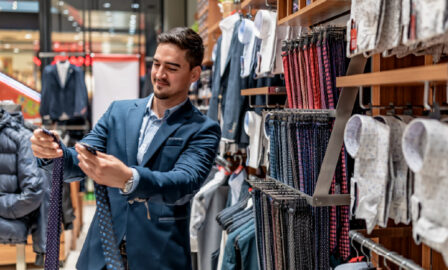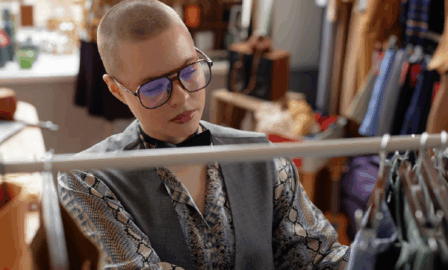2023 Luxury Retail Industry Trends
Read our updated trends report here: 2024 Luxury Retail Trends
Clarkston’s team of luxury retail consultants have highlighted the top luxury retail industry trends that businesses should consider. Read all five trends for 2023 by downloading the full report here.
The luxury retail industry is well-positioned for continued growth in the coming years. Retailers are improving the shopping experience and maximizing access to their products through direct-to-consumer (DTC) channels, eCommerce platforms, and social media channels. Additionally, the rise in goods being sold online is contributing to strong forecasts for revenue growth in the market, with several predictions suggesting that sales will occur primarily online as opposed to physical retail spaces over the near term.
In this report, we outline several luxury retail trends for 2023, building upon our retail experts’ previous perspectives of how to best leverage technology to better meet evolving customer needs.
2023 Luxury Retail Industry Trends
Trend #1: Luxury Retailers Investing in the Metaverse
Luxury retailers are making bold bets on the future of the metaverse by increasing their brands’ presence within these virtual worlds. The metaverse enables individuals to purchase and enjoy luxury outfits, fashion accessories, and more in a unique format that has the potential to increase virtual connections among savvy shoppers. In addition, the metaverse truly captures a vibrant and immersive world, where individuals can interact with other individuals virtually as done in person. Specifically, people can now purchase luxury outfits virtually, which has increased access to brands a shopper may not have otherwise purchased, and customers have begun buying and collecting virtual designer assets using real money.
Many brands have begun to sell work and designs as nonfungible tokens (NFTs) in the luxury retail space. Runway designs can be sold virtually as NFTs, which serve as digital receipts of ownership. NFTs, are “authentic” and “exclusive” in nature and discourage knockoffs. Many of the largest luxury brands – Burberry, Dolce & Gabbana, Hermes, Gucci, and numerous others – are utilizing NFTs to capture the loyalty of new consumers. Shoppers who currently purchase luxury personal goods enjoy the fact that the luxury resell market is active and profitable, and we can expect to see the same resell/transfer activity within NFT marketplaces moving forward.
Download the Full 2023 Luxury Retail Industry Trends Report Here
Digitalization presents additional cost-saving opportunities for retailers because there are fewer raw material and labor costs, and luxury retailers can even start minting designs. Luxury retailers can capture substantial margins by selling limited designs virtually as NFTs at a premium price, enabling an even more differentiated luxury experience. Furthermore, the evolving digital landscape presents luxury retailers with numerous opportunities to increase brand awareness and offer a more expansive online presence, further increasing audience engagement via creative entry points to shopping experiences.
Trend #2: Enhancing Buyer Experience with Augmented Reality (AR)
In addition to exploring avenues for engagement within the metaverse, luxury retailers are also enhancing shopping experiences with Augmented Reality (AR) and other technological developments to meet changing customer preferences and provide a more personalized try-on experience. With so much competition, luxury retailers are turning to technologies like AR to offer a premium experience for their customers without the inconvenience of using physical changing rooms.
Shoppers seeking to purchase luxury items expect lux buying experiences throughout their purchasing journey, where individuals can test different designs and view what products would look like in their own spaces before purchasing. Specifically, these technological developments can meet customer preferences for greater personalization and provide accurate dimensions for size and fit that ensure elevated satisfaction levels. Through precise measurements and innovative experiences, AR benefits luxury retailers as returns are reduced while building trust and loyalty among the brands’ customer base.
AR technology can also be utilized for more seamless contactless experiences, which will save time and improve effectiveness of transactions in-store and online. One report details that merchants who implement 3-D content to their stores experience a 94% conversion shift on average, which supports why retailers investing in digital in-store displays will capture and engage an increased number of prospective shoppers. Further, these displays have the ability to collect and track real-time analytic data, where unlike normal billboards, AR displays can be updated based on data collection and further drive brand awareness.
Luxury retailers must provide an enhanced try-on experience to meet customer preferences for a more personalized and well-informed shopping experience, a trend that was accelerated by the recent pandemic. AR technology and technological innovations contribute to a uniquely tailored and enhanced buying experience, which will be a game changer for luxury retailers moving forward. Continue reading by downloading the full report below.
Download the Full 2023 Luxury Retail Industry Trends Report Here
Read last year’s Luxury Retail Industry Trends Report here.
Subscribe to Clarkston's Insights
Contributions from Hannah Razavi



